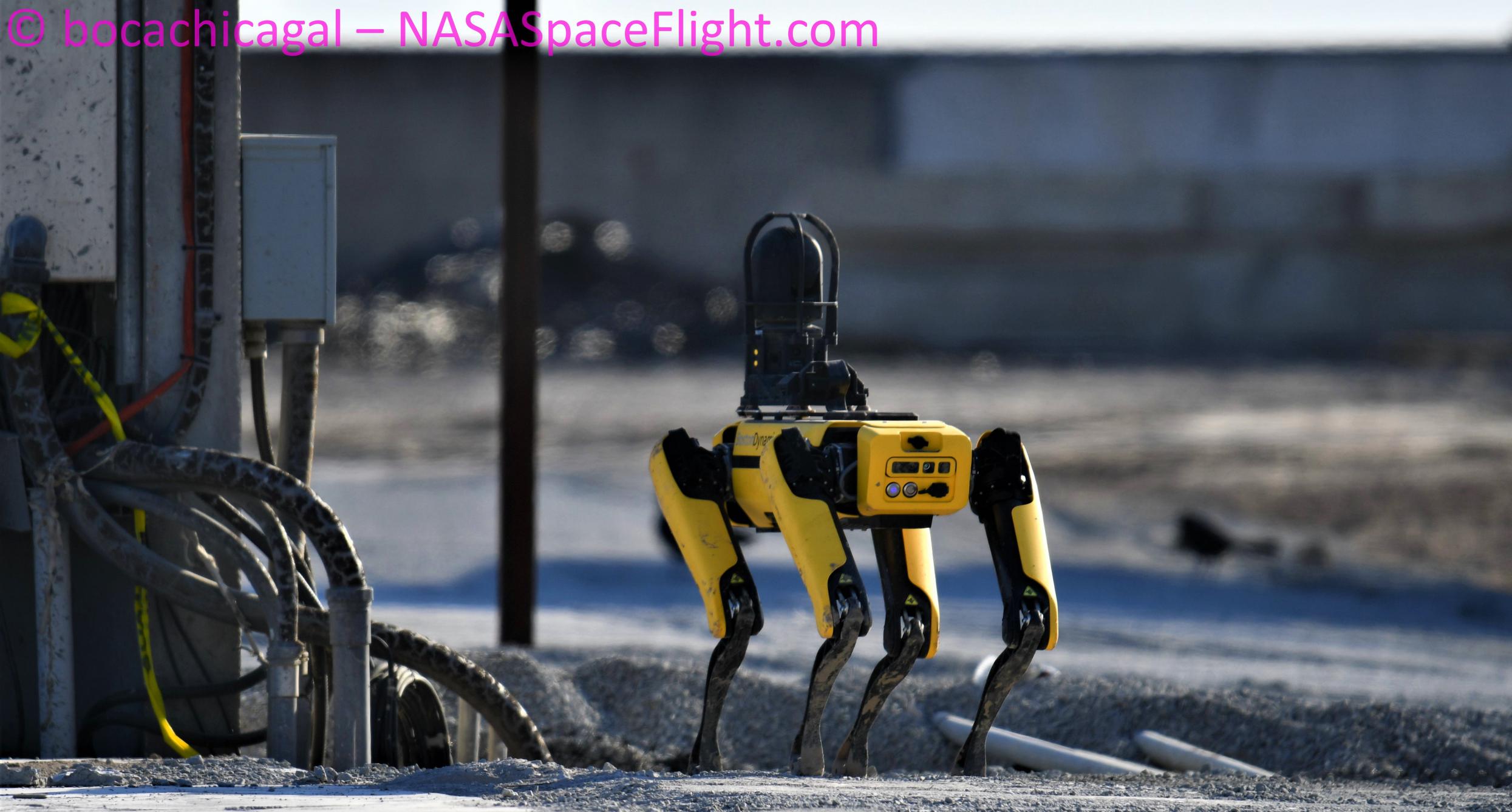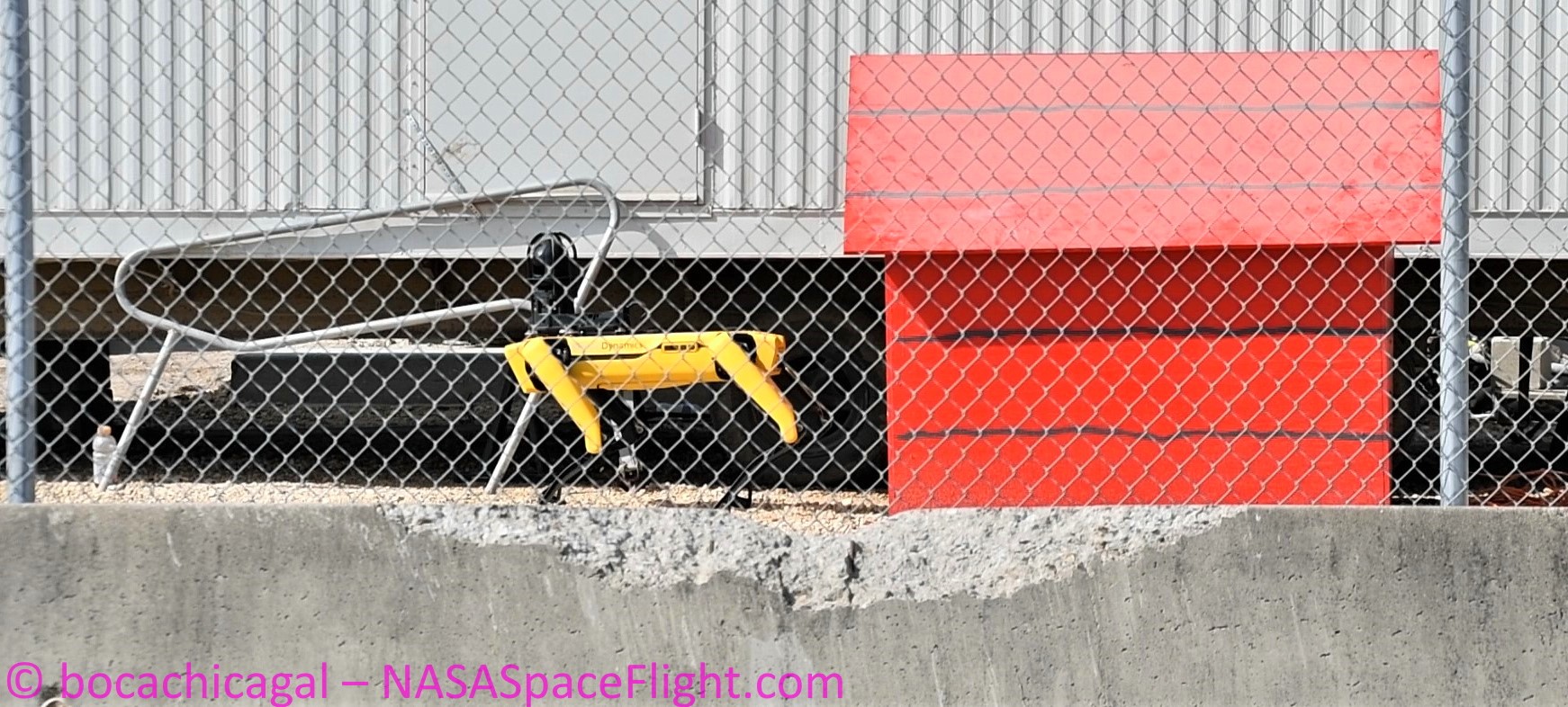SpaceX inspects the Starship with a robot dog following the first engine test in months.
SpaceX inspects the Starship with a robot dog following the first engine test in months. With less than 20 minutes remaining in a seven-hour test window, Starship prototype S20 (Ship 20) appeared to either complete its first intentional Raptor preburner test or attempt an unsuccessful Raptor static fire test around 11:40 pm CDT (UTC-5) on Monday, October 18th. The above view from a special LabPadre camera almost conclusively establishes that Starship S20's initial engine test was a Raptor Vacuum preburner test, and provides no compelling indication that it was a two-engine test. The preburner test on Ship 20 is SpaceX's first since the static firing of the first Super Heavy rocket in mid-July, nearly three months ago. During the preburner test, however, the massive flame created by the Raptor Vacuum appeared to ignite numerous pieces of pad gear.
To maximise efficiency, Starship's Raptors require two independent closed-cycle gas generators dubbed preburners to convert the engine's cryogenic (very cold) liquid oxygen and methane propellant into a hot gas mixture that the engine re-ignites to generate thrust. A preburner test, if that is what Starship S20 accomplished on Monday night, entails activating only the first half of that equation, swiftly generating a massive cloud of flammable gas without actually igniting to provide useful thrust.
Preburner experiments have dwindled in frequency as SpaceX's sea-level Raptor design matured over tens of thousands of seconds of ground testing and, later, thousands of seconds of ground and flight testing on Starship prototypes. During its initial test, Starship S20 was equipped with two engines. One Raptor was the sea-level optimised model SpaceX developed in large quantities and tested on the ground for over 30,000 seconds. The other was a vacuum-optimized Raptor with a significantly larger nozzle — the first of its sort to be tested while mounted on a Starship prototype.
Advertisement
Raptor Vacuum (RVac) engines may have further design adjustments in addition to their larger expansion nozzles. Regardless, SpaceX has only produced and tested approximately ten RVac prototypes in the previous year, making it a less mature engine than its sea-level counterparts. That could explain why SpaceX appears to have selected a preburner test over a wet dress rehearsal and static fire. This also suggests that the test conducted on October 18th was possibly the first time a Raptor Vacuum engine ignited (partially) while mounted on a Starship.
The above view from a special LabPadre camera almost conclusively establishes that Starship S20's initial engine test was a Raptor Vacuum preburner test, and provides no compelling indication that it was a two-engine test. Ship 20 must yet pass many critical tests before SpaceX can consider it (or its overall design) qualified for flight. This comprises various static fires, the first of which was a side-by-side static fire of two Raptor versions (RVac and Raptor Center), the first of which was a simultaneous static fire of more than three engines, and the first of which was a Starship static fire with all six engines mounted.
The preburner test on Ship 20 is SpaceX's first since the static firing of the first Super Heavy rocket in mid-July, nearly three months ago.
Advertisement


At least two Starbase Spot robots – Zeus being one of them – and his doghouse. bocachicagal (NASASpaceflight)
Hopefully, S20's initial preburner test has cleared the way for a static fire of one or both installed engines later this week. During the preburner test, however, the massive flame created by the Raptor Vacuum appeared to ignite numerous pieces of pad gear. SpaceX used one of at least two on-site Boston Dynamics Spot robots to physically walk a camera up to the active pad and check several secondary flames. Finally, SpaceX looks to have safely landed Starship without causing any damage to the vehicle, but the chances are that the causes of those secondary fires will need to be addressed, as will any pad damage, before Ship 20 enters static fire testing. SpaceX has scheduled two additional 5pm-12am test periods for October 19th and 20th.